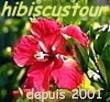-

"hibiscustour", three separate sites -
Islands and lagoons New Caledonia, Polynesia (part). -

Curiosity. Things, amazing, science, society.. -

Ideas perso. Household, Practical life, D.I.Y, Computering..
 
but reality |
  |
|
Community, solidarity (clans go hand in hand) The needs for the community precede in front of the personal interest because only this system could allow surviving in an environment which was not always if spendthrift that it is thought. With time and "progress", these obligations lose little by little their base. However, the community remains very "welded" (for example, one of them said to me that the Maffia had tried to settle : "We put contracts on them and they did not return". See Polynesia 2 |
The model was advanced until the education of the children who were or are still sometimes "given " by their parents and brought up by others parents, persons or even the community. Given but not abandoned; this aspect often made think by Europeans that the children went and came and were yielded without concern; it is still a prejudice because the child on the contrary is very protected and always at the community care. The model is blown the more so as the way of life is deeply modified and that the children themselves want to live with their parents, even if the parents make a lot when they are babies but have very little contact afterwards. Is it an Asian point of view there found, or societies marks where the kid must assume himself very quickly by the necessity ?
|
|
volcanoes (remains), lagoons, motus (islets) atolls. See at the bottom of this page "training lagoons. The Polynesia umbrella 20% of the world atolls lagoons in the world. The largest lagoons correspond to the smallest remnants of volcanoes, until their complete disappearance when These volcanoes have no more magma below for long (hot point), and they slowly sink with the ocean plate moving forward. The lagoons and reefs were first ignored, mainly representing a real danger for sailors when at the time of Pierre Loti, it took three months to reach them form Europe. The sea and swimming being not yet in vogue, "they turned instead back to the sea." Today, major hotels are only opened over the lagoons, creating or recreating this rather artificial paradise expected by tourists, well shelled from the real problems of the country, slums and industrial areas of Papeete. The photo below shows the case of Raiatea and its double islandl and its lagoon, seen here between both sides, with an island (motu) in front. Morea (*) I quote : "with its sublime beaches, waterfalls, rivers, Morea looks like a garden preserved for a time." But many people seem to want to go there.. for Papeete and all its services, is just a few steps. The government is aware of the risks. |

|
the whole is all at once modest, luxurious and inaccessible to ordinary mortals. View all directions with unforgetable Morea as background. Photo and translation Polynesian received from George (April 2008). |
|
Decimated after their contact with Europeans (diseases, abandonment of the "tabu" which protected them sometimes), the population went up little by little (219.000 inhabitants in 1996) and increase regularly, which poses new social problems (unemployment, minor delinquency). Polynesians are in a majority with more than 60%, come then the half-breed, Europeans (Popa'a), Asian 5% only but who own in Tahiti 85 % of the goods (grounds, buildings.) according to the statement of our Tahitien. the Polynesians are in a majority with more than 63% of Ma'ohi pure and 20% of mongrel; then 12% come from Europeans (Popa'a) and only 5 % the Asian ones (Tinitos) but who have in Tahiti 85% of the goods (grounds, buildings.) according to the statement of our Tahitien. They "were introduced" by the French to reinforce the labour, like that was practised in the Fiji by the English (introduction of Indians). The islands enchanteresses of the Pacific, described like the Paradise by Bougainville (time of the "good" savage of JJ Rousseau), offered landscapes of dream, with inhabitants generally very accessible magnet to organize festivals. They were so in addition to the exotic products which one could draw, the place of an incredible interbreeding Japan and Russia included. See in Oceania complement, it is the life and tribes. |
Raiatea is a water sports center.
For the Polynesians, See also Oceania, that's the life and tribes. |

|